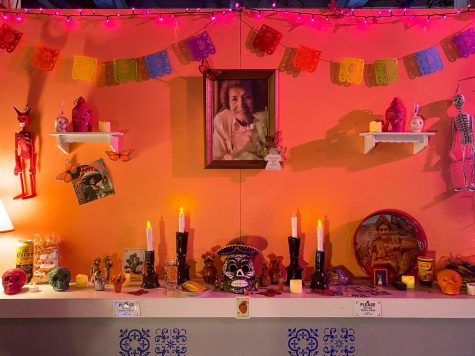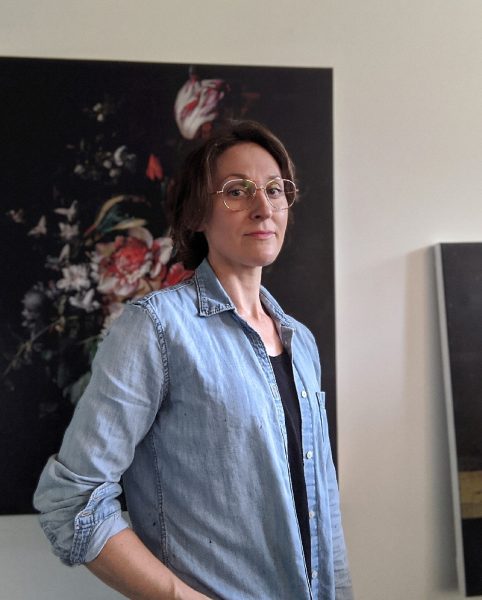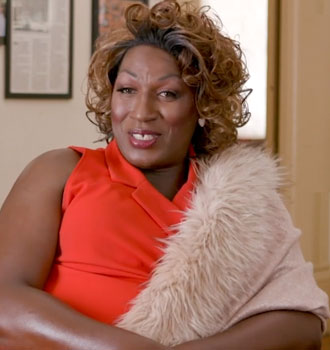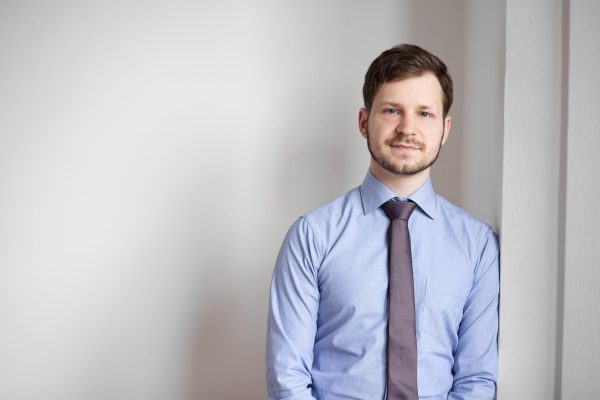Alex Corona, Mexican Multimedia Artist in Cleveland
Alex Corona is a Cleveland-based first generation Mexican artist whose multimedia exhibition Alma-Vision/Camposanto was on view at IngenuityFest 2022 from Sept. 23–25. IngenuityFest is an annual art and experiential event. Alma-Vision/Camposanto is the first project of Babel Box Theater, the new Ohio nonprofit organization dedicated to social justice and the performing arts. Corona invited the public to take part in his project by contributing images of their departed loved ones to create a visual exploration honoring the Indigenous roots of Día de los Muertos, or Day of the Dead.
This interview has been edited for length and clarity.

Your installation evokes many experiences of those from a distinct cultural background. What does it mean to showcase this heritage through Alma-Vision/Camposanto?
Culture is knowing where you came from and your history. I was raised by my grandmother and my aunt. My mom had issues, but she was there as well. I have a lot of memories of their handmade tortillas and the songs they sang. One of their traditions that just popped in my head was that for our birthdays early in the morning, they would play Vicente Fernández, “Las Mañanitas” on the record player.
How has it been having your installation at IngenuityFest with this in mind?
So far, it’s been a very positive experience — everyone who’s passed through the installation has said nothing but nice things. Ingenuity has also been incredibly helpful and it seems like they’re excited to have me here.
What were some of the original creative concepts behind Alma-Vision/Camposanto during development?
I wanted to show the progression and transformation of Día de los Muertos from its inception. The Indigenous Mexica people, which some may know as Aztec, celebrated Día de los Muertos, Tlaxochimaco, the flower offering, and Xocotl Uetxi, the falling of the fruit, as a two-month event honoring the dead. The first month was for the children and the second month for the adults. When the Spaniards came, they deemed these traditions as evil, which forced the Mexica to celebrate in secrecy. It has now morphed into the All Souls Day, which takes place on Nov. 1 and 2, and is how we celebrate now.
In the installation, the front wall represents the Indigenous ofrendas, and the wall to the left is more of a vintage 1920s representation of [Día de los Muertos], which I used to show the progression of the holiday.
There’s an old 1950s Arvin console television in the installation. It represents the concept of Alma-Vision — ‘Alma’ meaning soul. The concept behind this [prop] was having our loved ones on the “other side” broadcast a greeting from Miktlan — the Indigenous word for the place we go when we die, a place of rest and transmigration.

There’s a noticeable cross-generational appeal to the installation. What was the significance in highlighting this passage of time?
Our blood never dies, it keeps going from generation to generation. That’s what I was trying to show — that generations, all the way from our Indigenous ancestors, are still here living through us, and we can celebrate it in ways that they did. It’s a cycle; another seed comes up and grows into new experiences, memories, traditions, songs, and ways of culture, which we pass on to the next generations.
Reaching out to the community for photos of their deceased loved ones for this exhibit must have been quite the emotional task. How did your team go about this outreach?
When I sent out the calls, it was sort of awkward because not everybody is very familiar with Day of the Dead. So instead of saying, “Hey, send me pictures of your dead relatives,” we had to word it in a certain way to be respectful. It was also a labor of love because a lot of my own family members are up on the ofrendas as well. I lost myself in the work and built out the vision I had. When everything was done, I took a moment to sit down and take it all in.
The set design for the installation is beautiful, what was the process of putting this together?
It took us about two and a half months to build it. My father-in-law helped me with the build and my sister Lilly, who had a cultural dance group here for many years, helped with the film. It’s been a family affair.
How has it been to produce this performance with Babel Box Theater?
I figured this show was a good opportunity to get the name out there. I had always wanted to do something like this, especially because of the void in this part of the country when it comes to Mexican and other Central American cultures. In Cleveland, the Mexican community is not a huge one. You go to a lot of other major cities like Chicago or New York and the Mexican population is rather big.
Our mission is to represent the underrepresented and the marginalized through performance and partnerships. Our first play is about a transgender immigrant. We already have the rights to do the play but we don’t have the funding yet, so it’s not official. Everyone who’s involved in Babel Box Theater loves art and performance. We do it out of love for the art, love for our culture, and to do it justice.






